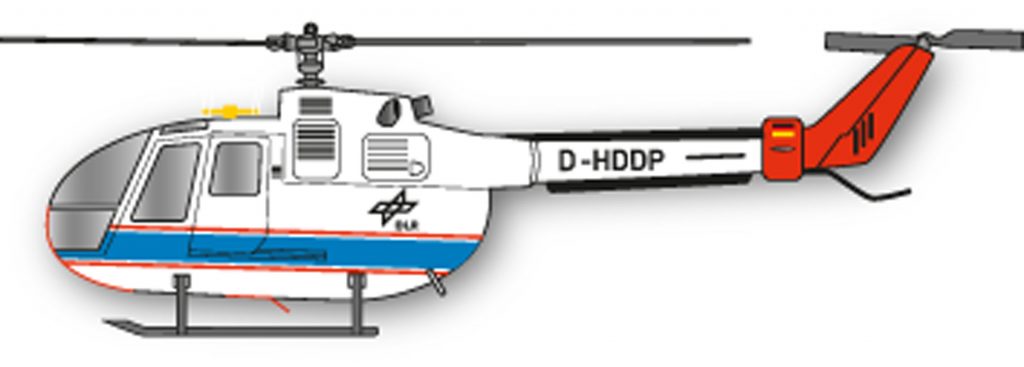Versatile research helicopter
The BO 105 is a fve-seater research helicopter with a rigid, four-bladed main rotor and a semi-rigid two-bladed tail rotor. All of the rotor blades are made of glass fibre-reinforced plastic. The helicopter is powered by two Allison 250 C20 engines. This versatile helicopter is used for numerous activities, which include investigating flight characteristics, thermal imaging, special sensor technology, low-noise approach flight profiles, pilot assistance systems and research into flying with external loads, among other applications. If required, the BO 105 can be ftted with special equipment. These include main and tail rotor blades enhanced with pressure sensors and strain gauges to measure the forces and pressure conditions at the rotor blades.
The DLR BO 105 research helicopter differs from the standard BO 105 due to the following modifcations: on-board computer to record flight parameters; nose boom for precise measurement of wind velocity and direction; instruments on the main and tail rotors to measure the forces and pressure conditions at the rotor blades; attachment points outside the cabin for payloads such as infrared cameras; IFR cockpit provision (Instrument Flight Rules – for flying in diffcult weather conditions, otherwise known as instrument meteorological conditions, or IMC, which require flying with instruments); the LASSIE system (Low Air Speed Sensing and Indicating Equipment – a system for accurately measuring the flying speed in the lower speed range). In future, the BO 105 will be equipped with a comprehensive measuring system for recording flight-relevant parameters.
German Aerospace Center (DLR)
Oliver Brieger · E-Mail: oliver.brieger@dlr.de · DLR.de
